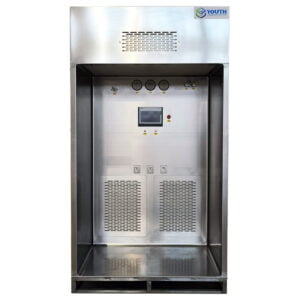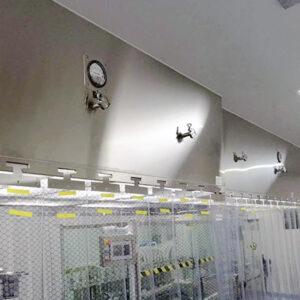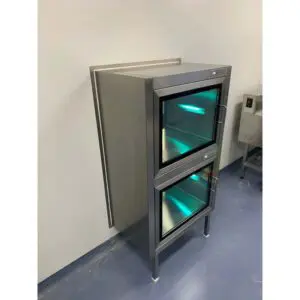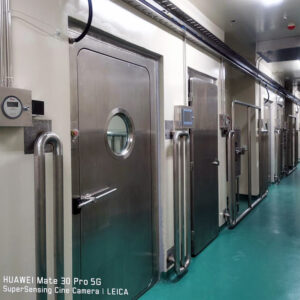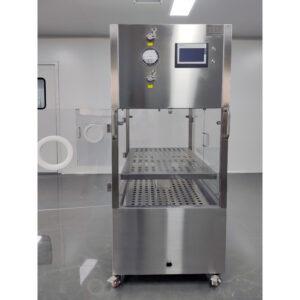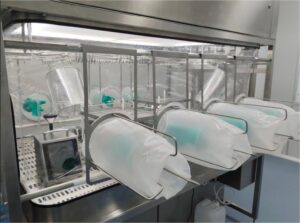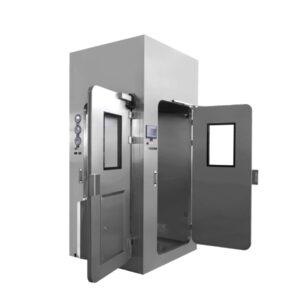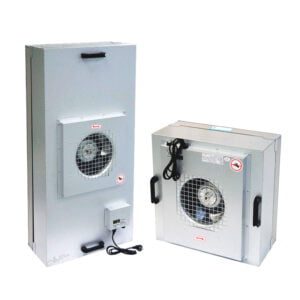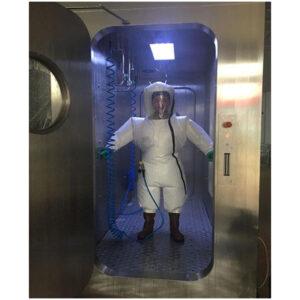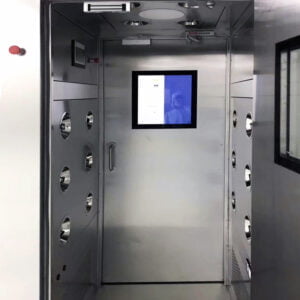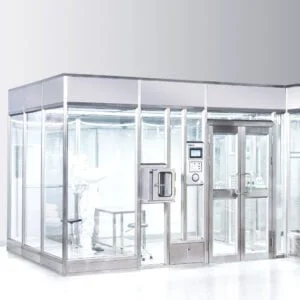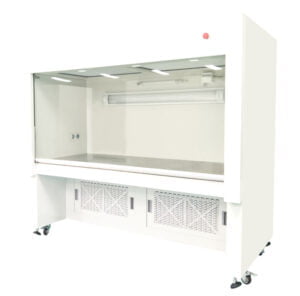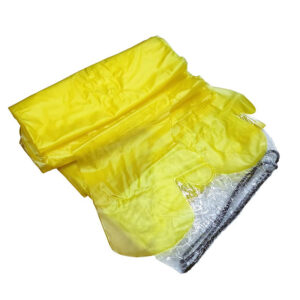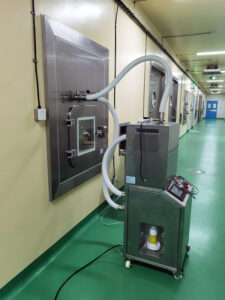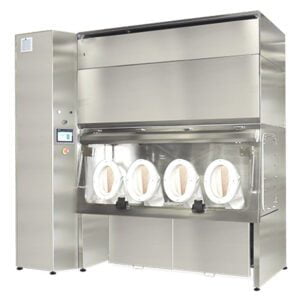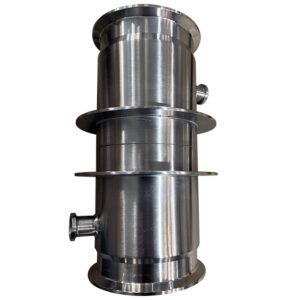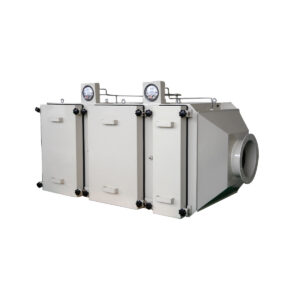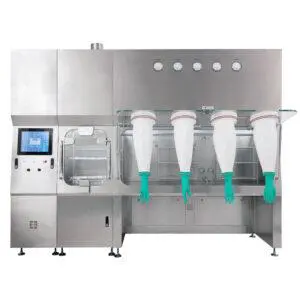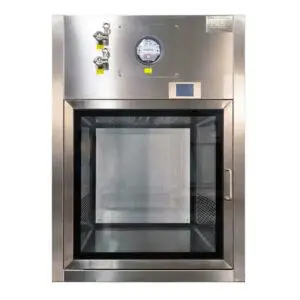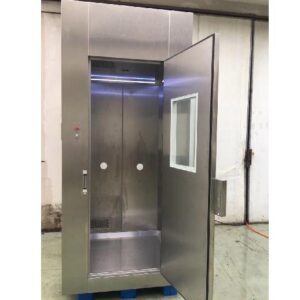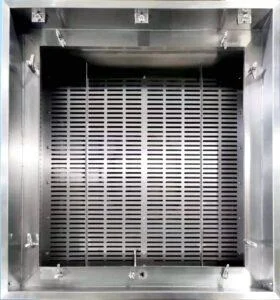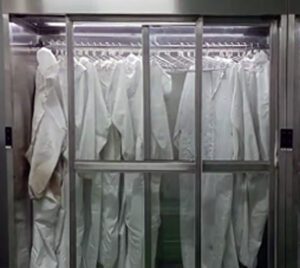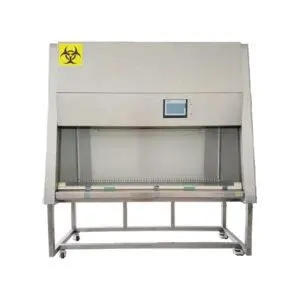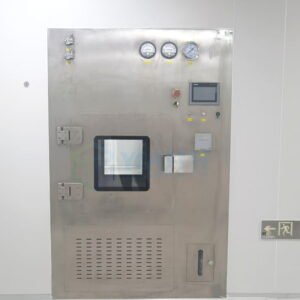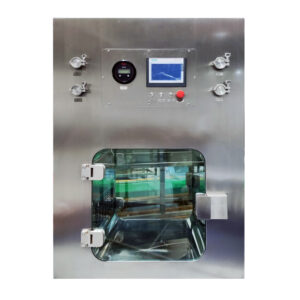As we approach 2025, the importance of optimal airflow velocity in laminar flow systems continues to grow in various industries, from pharmaceuticals to electronics manufacturing. Achieving the perfect balance of airflow is crucial for maintaining clean, controlled environments that meet increasingly stringent standards. This article delves into the latest developments and best practices for optimizing airflow velocity in laminar flow units, exploring how these advancements will shape the future of contamination control.
The quest for optimal airflow velocity in laminar flow systems is a complex interplay of factors, including particle control, energy efficiency, and regulatory compliance. As we look towards 2025, industry experts anticipate significant improvements in laminar flow technology, driven by advancements in computational fluid dynamics and sensor technology. These developments promise to enhance the precision and reliability of airflow control, leading to more effective contamination prevention and improved product quality across various sectors.
As we transition into the main content of this article, it's essential to understand that the concept of optimal airflow velocity is not a one-size-fits-all solution. Different applications require tailored approaches, and what works for a pharmaceutical cleanroom may not be suitable for a semiconductor fabrication facility. However, certain principles and trends are emerging that will likely define the state of laminar flow systems in the coming years.
By 2025, it is projected that laminar flow units will achieve a 15% increase in energy efficiency while maintaining or improving their contamination control capabilities, thanks to advanced airflow optimization techniques and smart control systems.
What are the key factors influencing optimal airflow velocity in laminar flow systems?
The pursuit of optimal airflow velocity in laminar flow systems is a delicate balancing act, influenced by a myriad of factors. At its core, the goal is to maintain a consistent, unidirectional flow of air that effectively sweeps away particles and contaminants without creating turbulence or dead zones.
Key considerations include the size and nature of particles to be controlled, the dimensions of the clean space, the heat load within the area, and the specific requirements of the processes being performed. Additionally, energy efficiency and operating costs play a significant role in determining the most suitable airflow velocity.
Diving deeper, we find that the relationship between airflow velocity and particle control is not always linear. While higher velocities can more effectively remove larger particles, they may also cause unwanted turbulence or re-entrainment of smaller particles. Conversely, lower velocities might be more energy-efficient but could compromise the system's ability to maintain cleanliness levels.
Research indicates that for most laminar flow applications, an airflow velocity range of 0.3 to 0.5 meters per second (m/s) provides the optimal balance between particle control and energy efficiency. However, specific applications may require velocities outside this range.
| Factor | Impact on Airflow Velocity |
|---|---|
| Particle Size | Larger particles require higher velocities |
| Room Dimensions | Larger spaces may need higher velocities |
| Heat Load | Higher heat loads may necessitate increased airflow |
| Process Sensitivity | More sensitive processes require tighter control |
In conclusion, determining the optimal airflow velocity for a laminar flow system requires a comprehensive understanding of the specific application, environmental factors, and operational requirements. As we move towards 2025, advancements in sensor technology and computational modeling will enable more precise and adaptive control of these critical parameters.
How will advancements in sensor technology impact airflow velocity control by 2025?
The future of laminar flow systems is intrinsically tied to the evolution of sensor technology. By 2025, we can expect to see a new generation of sensors that will revolutionize how we monitor and control airflow velocity in these critical environments.
These advanced sensors will offer real-time, high-precision measurements of not just airflow velocity, but also particle counts, temperature, humidity, and even specific contaminants. This wealth of data will enable more responsive and intelligent control systems, capable of making minute adjustments to maintain optimal conditions.
One of the most exciting developments is the integration of machine learning algorithms with these sensor networks. These AI-driven systems will be able to predict and preemptively adjust airflow velocities based on historical data and current conditions, ensuring consistent performance and minimizing disruptions.
It is anticipated that by 2025, smart sensor networks in laminar flow units will reduce energy consumption by up to 20% while improving contamination control efficacy by 15%, compared to traditional fixed-velocity systems.
| Sensor Type | Function | Benefit |
|---|---|---|
| Ultrasonic Anemometers | Precise airflow measurement | Enhanced velocity control |
| MEMS Particle Sensors | Real-time particulate monitoring | Immediate contamination detection |
| IoT-enabled Sensors | Continuous data collection and analysis | Predictive maintenance and optimization |
In conclusion, the advancements in sensor technology will transform laminar flow systems from static, pre-set environments to dynamic, responsive ecosystems. This shift will not only improve contamination control but also significantly enhance energy efficiency and operational reliability. As these technologies mature, we can expect to see more widespread adoption across various industries, from YOUTH cleanroom solutions to advanced manufacturing facilities.
What role will computational fluid dynamics (CFD) play in optimizing airflow velocity for 2025 and beyond?
Computational Fluid Dynamics (CFD) is set to play an increasingly pivotal role in the design and optimization of laminar flow systems as we approach 2025. This powerful simulation tool allows engineers to model and analyze airflow patterns with unprecedented detail and accuracy, leading to more efficient and effective laminar flow units.
By 2025, we can expect CFD software to become more accessible and user-friendly, enabling a wider range of professionals to leverage its capabilities. This democratization of CFD will lead to more innovative designs and faster iteration cycles in the development of laminar flow systems.
One of the most significant advantages of CFD is its ability to simulate complex scenarios that would be difficult or impossible to test in physical prototypes. This includes modeling the impact of various equipment layouts, personnel movements, and even the effect of opening and closing doors on airflow patterns within a cleanroom.
Advanced CFD simulations are projected to reduce the time required for laminar flow system design and optimization by up to 40% by 2025, while also improving the overall performance of these systems by identifying and mitigating potential issues before construction.
| CFD Application | Benefit | Impact on Airflow Velocity |
|---|---|---|
| Airflow Visualization | Identifies dead zones and turbulence | Allows for targeted velocity adjustments |
| Particle Tracking | Simulates contaminant movement | Optimizes velocity for specific particle sizes |
| Heat Load Modeling | Predicts thermal impacts on airflow | Ensures consistent velocity in varying conditions |
In conclusion, CFD will become an indispensable tool in the quest for optimal airflow velocity in laminar flow systems. Its ability to provide detailed insights into complex fluid dynamics will enable engineers to create more efficient, effective, and reliable systems. As we move towards 2025, the integration of CFD with real-time sensor data and machine learning algorithms will further enhance our ability to maintain ideal laminar flow conditions in a wide range of applications.
How will energy efficiency concerns shape airflow velocity strategies in laminar flow units?
As we look towards 2025, energy efficiency is poised to become an even more critical factor in the design and operation of laminar flow units. With growing environmental concerns and rising energy costs, the industry is actively seeking ways to optimize airflow velocity without compromising on cleanliness standards.
One of the key strategies emerging is the implementation of variable speed fans and smart control systems. These technologies allow laminar flow units to adjust their airflow velocity based on real-time needs, rather than operating at a constant high velocity. For instance, during periods of low activity or when no contaminants are detected, the system can reduce its airflow, saving energy without risking cleanliness.
Another important development is the use of advanced filtration materials that offer lower pressure drops. These materials allow for effective particle capture at lower airflow velocities, reducing the overall energy demand of the system while maintaining or even improving its performance.
Industry experts predict that by 2025, next-generation laminar flow units will achieve up to 30% reduction in energy consumption compared to 2020 models, primarily through optimized airflow velocity control and improved filtration technologies.
| Energy Efficiency Strategy | Impact on Airflow Velocity | Energy Savings Potential |
|---|---|---|
| Variable Speed Fans | Dynamic velocity adjustment | Up to 25% |
| Low Pressure Drop Filters | Allows for lower velocities | 10-15% |
| Smart Scheduling | Reduces velocity during off-hours | 20-30% |
In conclusion, the drive for energy efficiency will significantly influence airflow velocity strategies in laminar flow units by 2025. The industry will see a shift from constant high-velocity systems to more dynamic, responsive solutions that balance cleanliness requirements with energy conservation. This evolution will not only reduce operational costs but also align with global sustainability goals, making Airflow velocity in laminar flow systems more environmentally friendly without compromising their primary function of contamination control.
What impact will regulatory changes have on airflow velocity requirements in laminar flow systems?
As we approach 2025, the regulatory landscape governing cleanroom environments and laminar flow systems is expected to evolve, potentially impacting airflow velocity requirements. These changes are likely to be driven by advancements in technology, growing concerns about energy efficiency, and an increased understanding of contamination control dynamics.
One anticipated trend is the move towards more performance-based standards rather than prescriptive requirements. This shift could allow for greater flexibility in airflow velocity ranges, provided that the overall cleanliness and contamination control objectives are met. This approach would enable manufacturers to optimize their systems for specific applications while still complying with regulatory standards.
Another significant development is the potential for regulators to incorporate energy efficiency metrics into their guidelines. This could lead to a more holistic approach to laminar flow system design, where airflow velocity is balanced against energy consumption and overall system performance.
By 2025, it is predicted that regulatory bodies will introduce new standards that allow for a 15% wider range of acceptable airflow velocities in laminar flow systems, provided that advanced monitoring and control systems are in place to ensure consistent cleanliness levels.
| Regulatory Aspect | Current Approach | Anticipated 2025 Approach |
|---|---|---|
| Velocity Range | Narrow, prescribed range | Wider, performance-based range |
| Energy Efficiency | Not typically considered | Integrated into compliance metrics |
| Monitoring Requirements | Periodic checks | Continuous real-time monitoring |
In conclusion, regulatory changes by 2025 are likely to provide more flexibility in airflow velocity requirements for laminar flow systems. This shift will encourage innovation and efficiency improvements while maintaining stringent cleanliness standards. Manufacturers and operators of laminar flow units will need to stay abreast of these evolving regulations and be prepared to adapt their systems accordingly.
How will advancements in materials science influence airflow velocity optimization in laminar flow units?
The field of materials science is set to play a crucial role in shaping the future of laminar flow systems, particularly in terms of airflow velocity optimization. As we look towards 2025, innovative materials are emerging that could revolutionize the design and performance of these critical cleanroom components.
One of the most promising developments is in the area of advanced filter media. New nanomaterials and electrospun fibers are being developed that can achieve higher filtration efficiencies at lower pressure drops. This breakthrough allows for effective particle capture at lower airflow velocities, potentially reducing energy consumption without compromising cleanliness standards.
Another exciting area of research is in surface treatments that can repel particles or even actively neutralize contaminants. These materials could be used in the construction of laminar flow units, potentially reducing the reliance on high airflow velocities to maintain cleanliness.
Research indicates that by 2025, next-generation filter materials could allow laminar flow units to operate at up to 20% lower airflow velocities while maintaining or improving their current filtration efficiency levels.
| Material Innovation | Impact on Airflow Velocity | Potential Benefit |
|---|---|---|
| Nanofiber Filters | Allows for lower velocities | Improved energy efficiency |
| Self-cleaning Surfaces | Reduces velocity requirements | Lower maintenance needs |
| Antimicrobial Materials | Enhances contamination control | Potentially lower velocity needs |
In conclusion, advancements in materials science will provide new tools for optimizing airflow velocity in laminar flow units. These innovations will enable system designers to achieve the delicate balance between effective contamination control and energy efficiency. As these new materials become more widely available and cost-effective, we can expect to see significant improvements in the performance and sustainability of laminar flow systems across various industries.
What role will artificial intelligence and machine learning play in dynamically adjusting airflow velocity?
As we approach 2025, the integration of artificial intelligence (AI) and machine learning (ML) into laminar flow systems is poised to revolutionize how we manage and optimize airflow velocity. These technologies offer the potential for more responsive, efficient, and intelligent control of cleanroom environments.
AI and ML algorithms can process vast amounts of data from sensors throughout the laminar flow unit, including airflow velocity, particle counts, temperature, and humidity. By analyzing this data in real-time and learning from historical patterns, these systems can make predictive adjustments to airflow velocity, anticipating changes in conditions before they occur.
One of the most exciting applications is in adaptive control systems. These AI-driven controllers can dynamically adjust airflow velocity based on a multitude of factors, such as occupancy levels, equipment operation schedules, and even external environmental conditions. This level of fine-tuning ensures optimal contamination control while minimizing energy consumption.
It is projected that by 2025, AI-enhanced laminar flow systems will be capable of reducing energy consumption by up to 25% compared to traditional systems, while simultaneously improving contamination control effectiveness by 10-15%.
| AI/ML Application | Function | Impact on Airflow Velocity |
|---|---|---|
| Predictive Maintenance | Anticipates system issues | Ensures consistent velocity |
| Occupancy-based Control | Adjusts flow based on room use | Optimizes velocity in real-time |
| Particle Forecasting | Predicts contamination events | Proactively adjusts velocity |
In conclusion, AI and machine learning will play a transformative role in the dynamic adjustment of airflow velocity in laminar flow systems by 2025. These technologies will enable a level of precision and responsiveness previously unattainable, leading to significant improvements in both contamination control and energy efficiency. As these systems become more sophisticated and widely adopted, they will set new standards for performance in cleanroom environments across various industries.
In conclusion, the landscape of laminar flow systems and airflow velocity optimization is set for significant transformation as we approach 2025. The convergence of advanced sensor technologies, computational fluid dynamics, energy-efficient strategies, evolving regulations, innovative materials, and artificial intelligence is paving the way for a new generation of laminar flow units that are more efficient, responsive, and effective than ever before.
These advancements will enable unprecedented levels of control over airflow velocity, allowing for dynamic adjustments that balance contamination control with energy efficiency. The ability to fine-tune airflow in real-time based on a multitude of factors will not only improve the performance of cleanroom environments but also contribute to sustainability goals by reducing energy consumption.
As the industry moves forward, it will be crucial for professionals to stay informed about these emerging technologies and trends. The integration of smart systems, AI-driven controls, and advanced materials will require new skills and knowledge. Companies that adapt quickly to these changes will be well-positioned to lead in their respective fields.
Ultimately, the future of laminar flow systems looks promising, with the potential for significant improvements in both performance and efficiency. As we continue to push the boundaries of what's possible in contamination control, we can expect to see cleaner, more reliable, and more sustainable cleanroom environments across a wide range of industries. The journey towards optimal airflow velocity in laminar units is an ongoing one, and the developments we anticipate by 2025 are just the beginning of an exciting new era in cleanroom technology.
External Resources
Optimal Laminar Flow Air Velocity – AirProControl – This article discusses the optimal airflow velocity ranges for laminar flow in cleanroom environments, typically between 0.36 to 0.45 meters per second, and their implications for controlling particle contamination.
Laminar Flow – Wikipedia – This Wikipedia entry provides a comprehensive overview of laminar flow, including its characteristics, the role of the Reynolds number, and examples of laminar flow in various systems.
Understanding the Principles of Laminar Airflow – This blog post explains the principles of laminar airflow, its application in reducing contamination, and how computational fluid dynamics (CFD) tools can be used to design and optimize laminar airflow systems.
An Overview of the Laminar Flow Equation | System Analysis Blog – This article delves into the mathematical aspects of laminar flow, including the laminar flow equation, pressure drop calculations, and the relationship between flow rate, pipe diameter, and viscosity.
Laminar Flow in a Pipe, Pressure Drop and Velocity Equations – This video explains the equations used to calculate pressure drop, average velocity, and maximum velocity for fluid flowing through a circular pipe under laminar conditions.
Laminar Airflow Systems: Design and Application – This article focuses on the design and application of laminar airflow systems, including their use in cleanrooms, laboratories, and other controlled environments to minimize contamination.
Cleanroom Airflow: Laminar vs. Turbulent Flow – This article compares laminar and turbulent airflow in cleanroom settings, discussing the benefits and applications of laminar flow in maintaining a contamination-free environment.
Laminar Flow and Its Importance in Cleanrooms – This article highlights the importance of laminar flow in cleanrooms, including its role in reducing particle contamination, maintaining air quality, and ensuring regulatory compliance.
Related Contents:
- Energy-Saving Laminar Air Flow Units 2025
- Laminar Flow Hood Airflow: Understanding Dynamics
- Laminar Air Flow Unit HEPA Filter Guide 2025
- Airflow Velocity Testing for Mobile LAF Carts
- Energy-Efficient Mobile LAF Carts: 2025 Top Picks
- Energy Efficiency in LAF Garment Cabinet Design
- Airflow Patterns in Sterility Test Isolators: Design Guide
- Vertical Laminar Flow Hoods: Optimal Protection
- Airflow Control in Mobile LAF Carts: Expert Guide


